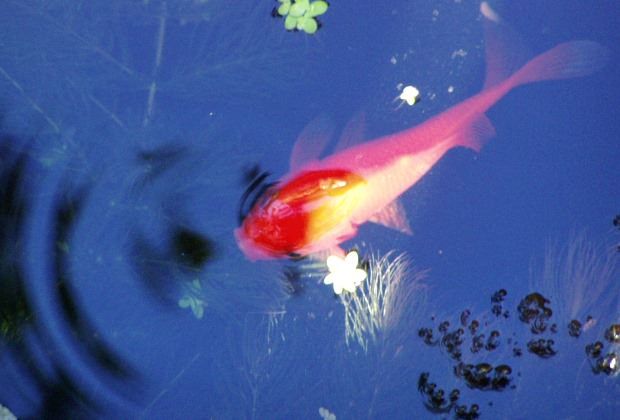
If you’ve immersed yourself into the delightful fish keeping hobby for any length of time, you’ve likely stumbled across white spot disease. White spot disease is a nasty infection caused by ich (or the longer version: Ichtyopthirius multifiliis). In fact, most aquarists have had to use an ich treatment at some point.
You come home one morning, brand new goldfish wiggling excitedly in their plastic bag. You’ve already set up the perfect aquarium environment for the little ones.
A cascading waterfall ornament spits out bubbles as your goldfish weave to and fro through the plants. Dazzling light bounces off green and blue rocks to pool streams of color across the glass. You’ve already cycled the tank. Everything is functioning the way it should.
You’re excited. Your goldfish are thrilled. And they enjoy their new home.
But three days later, you notice something odd.
Help! There Are White Spots on My Goldfish!
Your goldfish are smashing their bodies against every available surface, only to circle back down to the substrate with rapid, straining breaths. What’s more, your goldfish have become salted pretzels!
That can’t be right. You take a closer look through the glass and confirm that, indeed, your goldfish are sprinkled with tiny white spots. What do you do?
First of all, don’t panic!
White spot disease is actually pretty common in aquariums. This is especially true after buying new fish and forgetting to quarantine them before introducing them to the family.
The good news is that white spot disease can be cured with a natural ich treatment, without having to use strong medications that take weeks to rinse out. We’ll talk about this in a bit.
But before we begin ich treatment, let’s make sure your goldfish are suffering from white spot disease.
White Spot Disease Symptoms
If water tests come out clean but your goldfish are acting funky, you probably have a parasite problem.
Good thing that you can use an ich treatment to cure white spot disease quickly. But it’s important to treat ich early, before the parasite takes over the aquarium. Otherwise, numbers will become too overwhelming for your poor goldfish to handle.
Sick goldfish symptoms include…
- Heavy breathing: Your goldfish aren’t getting enough oxygen, so their gills speed into overdrive.
- Persistent scratching and brushing against objects: Your goldfish itch! They’d just as likely scrape their skin and damage their scales to make the itching stop.
- Small white spots on goldfish: Ich parasites won’t be visible at first. But after these pesky organisms feed on the bodily fluids of skin and fins, they encyst themselves and appear like small flecks of salt or sugar. The result? Your goldfish turn into swimming, breathing salted pretzels!
- Larger white patches on scales and fins: If you don’t use an ich treatment before white spot disease worsens, more ich parasites will attach to your goldfish to feed. So many that they might resemble salty white patches on gills, scales, and fins!
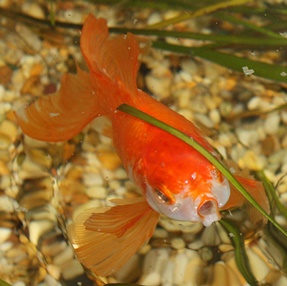
White spot disease can get downright scary as parasites quickly multiply. But don’t confuse this nasty infection with breeding tubercles on male goldfish. If white spots are only concentrated on the gill covers and head, your goldfish are ready for loving action.
Ich attacks all over.
These parasites don’t just attach themselves to the gills and head. If you want to be sure that your goldfish have white spot disease, look for spots on the body and along the fins. Besides, young eager-to-mate males act far differently from how a sick, infected fish would – they’re restless and not afraid to chase down a few females if given the chance.
Read more on goldfish disease symptoms if you don’t think an ich treatment will help.
So we know what ich looks like, but…
What Exactly Is White Spot Disease?
White spot disease, scientifically named Ichtyopthirius multifiliis, is commonly referred to as freshwater ich or ick.
The disease is caused by single-cell organisms (protozoa) that attack fish with lowered immune systems. If your goldfish have recently survived an infection, sudden temperature change, or long period in dirty water, they could be vulnerable to white spot disease.
And if they’re infected, treat goldfish promptly with an ich treatment!
Most ich is brought into the aquarium from the outside. When selecting goldfish, always look for signs of trouble and don’t buy anything from a tank with even one fish with ich. – Quick & Easy Goldfish Care by TFH Publications, Inc.
While ich is common in freshwater aquariums, the infection should by no means be brushed aside as something trivial. Begin ich treatment immediately. If ich parasites are allowed to run rampant, they can quickly overwhelm goldfish until their weakened bodies can’t handle the attack and your goldfish die.
Don’t risk the health of your fish because of one lousy judgment.
Always quarantine new fish several weeks before you let them explore the main aquarium. Even if your goldfish don’t appear sick, you should still practice safety first. You don’t know what kinds of goldfish diseases or parasites are swimming around in the water your bagged fish are in.
When ich parasites first attack, they won’t be visible unless you take a microscope to your aquarium. By the time you notice any signs of white spot disease, all of your fish will be infected.
Before Ich Treatment: A Deep Look at the Ich Life Cycle
You might not think it’s important, but learning how the ich parasite attacks and feeds off of your goldfish will help you understand why and how an ich treatment works. Better yet, it will help you understand how to wipe out ich once and for all so you never again have to use an ich treatment.
Feeding Stage
Each white spot on your goldfish is actually a nodule, or small lump, that an ich parasite has formed on your fish’s skin. What you’re observing is known as the feeding stage (source). The parasite (now a trophozoite) attaches itself to the skin and devours your goldfish’s body fluids until it’s ready to reproduce.
In fact, parasites have likely been feeding off of your goldfish a few days before the small lumps, or white spots, are even visible.
Ich trophozoites are resistant to most ich medications during the feeding stage. So if you try to use an ich treatment strong enough to kill them while they’re hidden away in their nodules, your goldfish will also receive the brunt of the attack.
Encapsulated Dividing Stage
When the ich parasite has finished feeding, it detaches itself from the skin and finds a piece of substrate, plant, or ornament where it will develop a cyst. The parasite becomes a tomont and the encapsulated dividing stage begins.
Hundreds of new parasites (theronts) will be produced within the next 24 hours.
Free-swimming Stage
According to Marshall E. Ostrow, author of Goldfish: A Complete Pet Owner’s Manual, over 500 new parasites break through each unattached cyst. This starts the free-swimming stage, where hundreds of new ich protozoa swim around looking for a host to attach to.
It’s now that you’ll want to begin treatment for white spot disease. Ich are most vulnerable during the free-swimming stage, when they’re not surrounded by a cyst. So before they attach to your goldfish, you’ll want to kill off as many of these free-swimming parasites with an ich treatment.
Once the parasite finds a host to attach to, the cycle repeats itself. They’ll feed for a few days, detach themselves, and form new cysts on the substrate and plants. Each new cyst contains hundreds of more parasites.
But hold in your tears! Curing your goldfish from white spot disease shouldn’t be daunting. You can speed up the process by raising the water temperature, forcing more parasites into the free-swimming stage.
Water temperature affects how long or short the ich life cycle is. Since goldfish enjoy cooler temperatures, naturally it might take weeks to a month for one parasite to finish a life cycle. At room temperature, an ich life cycle may complete in about five to seven days.
Luckily, you can speed up the life cycle even faster than that without harming your goldfish in the process. Here, I’ll teach you how with first a natural ich treatment before we dive into commercial ich treatment options.
How to Cure White Spot Disease: 2 Highly-Effective Ich Treatments
Remember: Don’t stop treatment when white spot disease is no longer visible.
You have to realize that not all of the parasites in your aquarium will be at the same stage in their life cycle. During the encapsulating dividing and free-swimming stages, you won’t even see the parasite until it attaches to your goldfish and enters the feeding stage.
For this reason, it’s important that you continue ich treatment even after you stop noticing signs of white spot disease. Otherwise, you might just miss a few parasites in the encapsulating dividing stage. The next thing you know, your goldfish are once more infected by white spot disease and you have to start ich treatment all over again.
With that in mind, let’s start exterminating nasty parasites! There are two methods for total ich destruction.
The first method is what I call the natural ich treatment. I recommend trying your hand at this one first, since it’s less expensive and undoubtedly less stressful on your goldfish than several commercial remedies.
The second method calls for the purchase of a commercial ich treatment. Depending on the medication, you’ll need to be cautious to make sure it doesn’t have a negative impact on any other pets in the aquarium.
All of the below ich treatments are very effective. However, if you plan to move very sick goldfish to a hospital tank, you should also treat the main aquarium to kill off any lingering parasites.
Ich Treatment #1: Natural Ich Remedy
I recommend this natural ich treatment, as it combines heat and salt to cure white spot disease.
First, the heat stops ich from dividing into hundreds of more parasites after it has detached from your goldfish. Next, the salt will help your goldfish develop their much-needed slime coats, which will safe-guard them against ich reattachments. Lastly, both the salt and heat will attack free-swimming ich with dagger-precision until the last of the parasites are killed off.
It’s important that you don’t medicate your goldfish during this process or else the heat and medication may work together to deny your goldfish oxygen (source). Some medications lower the oxygen levels in the water and, because heat also reduces oxygen, it’s safest for your fish if these two ich treatments aren’t combined.
Note: If you have other species of fish or invertebrates in the same aquarium, make sure they aren’t sensitive to salt before using the natural ich treatment. Fish like the scale-less variety can’t withstand large doses of salt. If your fish are sensitive to salt, do your research to determine how much salt to use in the aquarium.
Salt is optional. In fact, some fish hobbyists have successfully treated white spot disease without the use of salt at all. If you’re worried about giving your fish a salt bath, feel free to use just the heat method.
- Slowly raise the temperature of your aquarium water to 86 °F (30 °C). Do this over a 48-hour time period, raising the temperature in small increments (2 °F/1 °C every hour) to give your goldfish time to adjust to the heat (and prevent shock). High temperatures will stop ich parasites from reproducing (source).
- Maintain high oxygen levels. As the temperature rises, water won’t be able to hold dissolved oxygen as well (source). Oxygenate the water by reducing the water level (this will boost surface area agitation from your filter), aiming power heads towards the surface of the water, or placing a few extra air stones (or ornaments with embedded air stones) into the water.
- Add salt (optional). Use salt specifically for freshwater fish (aquarium salt), not table salt. Follow the directions on the back of the container for best results. I like to use API Aquarium Salt – it really works great on white spot disease. Simply add 1 tablespoon (3 teaspoons) for every 5 gallons (19 liters) of aquarium water. Many specialists also recommend 1 teaspoon per gallon instead.
- Keep your water temperature at a steady 86 °F (30 °C) for 10 days, changing the water every couple of days. While ich symptoms are visible, change 25% of the water every two days to keep oxygen levels up and remove excess parasites (adding the appropriate dose of aquarium salt after each water change). Wait 3 to 5 days after the last signs of white spot disease and reduce water temperatures once you’re sure all ich parasites are gone.
- Gradually reduce the water temperature back to 65 °F (18 °C). By this time, your goldfish should be swimming around happily in an ich-free environment. Do one last 25% water change and continue your water changes on a weekly basis as usual.
Congratulations! You’ve successfully conquered ich. Your goldfish should be very happy indeed.
If you notice more white spots on your goldfish after using the natural ich treatment (and you’re sure you continued treatment for at least three days after the last visible signs of white spot disease), it could mean that the parasite has grown resistant to the heat and salt treatment.
Don’t worry! If the ich parasite continues to attack your goldfish, the next step is to begin medicating. Let’s walk through the steps.
Ich Treatment #2: Using Commercial Ich Medications
If ich could win rewards, it would be for being persistent.
It’s okay though. While unpleasant, ich can’t stay alive forever. If you still notice parasites after 10 days of the heat and salt ich treatment, follow these steps.
- Change 25% of the water and remove excess waste. Vacuum the gravel with a water siphon and remove the active carbon from your filter. Increase surface agitation by lowering the water level or increasing water flow at the surface of the aquarium. Make sure your filter is still pushing a healthy flow of water into the aquarium.
- Slowly raise the water temperature to 80 °F (26 °C) over a 48-hour time period. The goal here is not to kill the ich with heat alone, like the natural ich treatment described above, but to speed up the ich life cycle. Basically, you want to force each parasite into the free-swimming stage as quickly as possible (where the ich medication will begin its work) without harming your goldfish in the process. Make sure you only raise the water temperature in small increments (2 °F/1 °C every hour).
- Treat your goldfish with ich medication. There are a host of commercial ich treatments on the market and many are effective. I personally like Mardel’s CopperSafe Fish Treatment. This ich treatment is copper-based and doesn’t stain like some medications. It can also be used to treat velvet, anchor worms, and other parasites. But be careful if you have invertebrates or plants in the same aquarium. Copper-based ich medications can be harmful. If you have a few lucky snails that have survived being goldfish food, try shopping around to find the best solution for your particular fish community. When you do find an ich treatment that works with your tank, read the label thoroughly and only use the recommended dosage.
- Add salt (optional). As mentioned earlier, salt can protect your goldfish by boosting its slime coat. It’s also effective when combined with medication. Words to the wise: If you have other fish and invertebrates in the aquarium, make sure they aren’t sensitive to salt treatments. If they are, you’re better off without.
If you’ve followed these directions exactly and you still notice signs of white spot disease, give it a couple weeks. Each ich parasite needs to begin the free-swimming stage before it can be exterminated. Eventually, white spots on your goldfish should disappear.
So now your goldfish are swimming away, carefree in an ich-free environment. Good work! I’m sure your goldfish are grateful to have conquered that itch.
But can the aquarium stay that way?
No More Ich: Preventing Future Infections
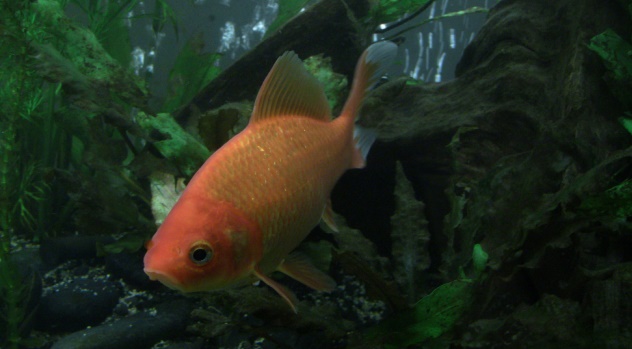
There’s nothing more frustrating than having to battle another ich infestation after dealing with one once before. Luckily, you don’t have to if you actively work to prevent white spot disease from rearing its parasitic head.
- Give your goldfish a once-over, before they leave the store. Shop wisely. Don’t purchase a fish before checking for signs that its tank mates might be sick. Make sure every fish in the aquarium looks healthy, even goldfish you aren’t buying. Never buy goldfish from an infected aquarium and never, ever, buy from a pet store trying to sell medicated fish.
- Quarantine new fish and plants for at least two weeks. Observe your goldfish during this time and begin ich treatment if they start showing signs of sickness. Some hobbyists also like to treat quarantined fish with anti-parasitic medication, even if the fish look perfectly healthy. Prazi-Pro is great as a preventative against internal parasites and is very safe to use for otherwise healthy goldfish.
- Never pour pet store water into your aquarium. Acclimate new fish with water from your own aquarium, but don’t spill the bag’s contents into the tank water. You don’t know what goldfish diseases or parasites could be swimming around, so play it safe.
- Purchase plants from fish-less aquariums. Quarantine new plants for at least two weeks when purchasing from a tank where fish are being sold. Otherwise, you could unknowingly transmit harmful parasites to your goldfish.
- Don’t use the same fish net until it’s all dried out. If you’ve just netted several fish out of their travel bag, don’t use the same fish net to then clean the main aquarium immediately after. There’s a chance parasites could have hopped a ride onto the net and you could just as well infect your main aquarium if you aren’t too careful. Keep an extra net nearby for these sticky situations and never use the same wet net after you’ve just moved fish to quarantine.
The best ich treatment is prevention. Preventing infections before they happen goes a long way in maintaining happy, thriving goldfish.
Remember: your goldfish depend on you for their care. If your goldfish do suffer from white spot disease or other infections, it’s up to you to find the best ich treatment that will nurse them back to health.
Your Turn
Do you have experience with treating white spot disease? How do you cure ich?
I’d love to hear your thoughts, including any recommended ich treatments or tips on battling white spots on goldfish, in the comment section below!
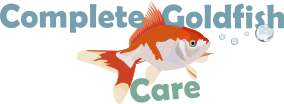
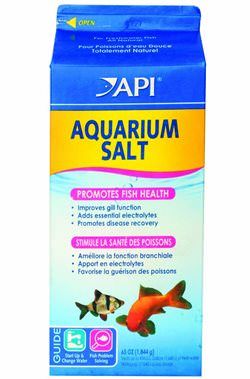
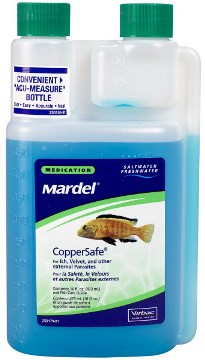


9 comments
Well after three weeks of trying to get rid of my ichs fish problem I am going to follow your instructions and i hope it the end of my battle .I have spent so much money i dont have one this venture. I will let you know most difinitly. Talk to you soon
Good luck on the ich treatment, Beverly! Ich can definitely be persistent. I’d recommend continuing treatment for at least three days after the last signs of ich. After the cysts have dropped off your goldfish, there’s a chance that some parasites still haven’t reached the free-swimming stage yet. You want to make sure you treat all of the parasites once they hit the free-swimming stage. That’s why you want to continue treatment for at least three days longer – otherwise, you might have to begin treatment all over again.
I am on our fourth day of treatment and all of the parasites have fallen off of our fish 🙂 I will keep the heat on for a few more days to make sure those suckers are dead, but we are very happy that our girl made it through.
That’s wonderful news, Jennifer! I’m happy your goldfish was able to pull through.
Hi there, me again.
I was wondering how long my goldfish (in reasonably good health, aged 18 months) might survive if I were to ride him into battle.
Please advise,
Matt
Hi Matt,
Goldfish can live 20 years and longer, so your goldfish would be considered still just a babe. If your goldfish has white spot disease, I recommend treating him quickly before the ich get too far out of hand.
I hope this answers your question!
your easy to follow instructions saved my fish and i am also much more educated im caring for my w
ater friends thank you sooo much
I have black oranda!
My fish has just developed symptoms of this disease!
I changed water and added some internal antinacterial medicine pet store gave me for popeye infection.. That solution had to be put into warm water anyway..
My tank is 15 liters, i added one and a half liter of warm water Anyways yesterday!
Now after reading this ^, i have added a little bit of warm water more so slowly change the temperature to 30.. And the water is 50 percent in tank so there’s enough oxygen! I have taken all the ornaments out so parasite are less..
Fish is already gone very slow and swimming but not well.. Too much pop in the tank so i keep clearing it.
How should i feed it? I have no access to salt so leaving it for now..
It has been three days it’s under attack 😢😢 I don’t want it to die.. It’s just one fish..
I’m so sorry to hear about your poor oranda, Maryum! If your goldfish has ich, I’d really highly recommend picking up some aquarium salt. Not only can you use it to treat ich infections, but it can help improve oxygen flow whenever your goldfish is stressed out or sick – especially when medicating the water!
When treating hospital tanks with medication, I generally like to hold off on feeding (to prevent waste and ammonia buildup in the tank). If I do think my fish will need the additional nutrients, I will feed a small amount about once per day. You can add a few drops of Garlic Guard or something similar to the food, letting it soak for a few minutes before feeding – this may help improve recovery of both the parasite and bacterial infection (plus, garlic juice is wonderful for enticing fish to eat if they won’t eat otherwise). If your goldfish is too weak to swim for its food, you can try handfeeding it (make sure to always rinse off your hands well to remove any residue from soap, grease, or lotions – preferably, it’s better to use latex gloves).
By the way, I do really suggest thinking about buying a larger tank for your fish. One goldfish should really be housed in 75 liters or more (you can read about why in my goldfish tank article here). 15 liters is pretty small for a goldfish, even if you’re just keeping one.
Also, if you haven’t done so already, you should try testing the water for ammonia and nitrite with a freshwater test kit – your goldfish can’t recover if the water quality is poor. You’ll want both ammonia and nitrite levels to stay at 0ppm (parts per million). You can read about water testing here. Though the water may appear healthy, it may still contain high levels of unhealthy water parameters that will make your fish sick. Ammonia and nitrite spikes can be pretty much invisible but just as deadly – you won’t know if your tank water has unhealthy levels of either unless you test the water for both parameters. If you can’t get a freshwater test kit, I recommend taking a sample of the water and having it tested at your local pet shop.
Let me know how your goldfish is doing and if there’s anything else you need help with! I really hope your fish can recover. :/ Good luck with treatment!